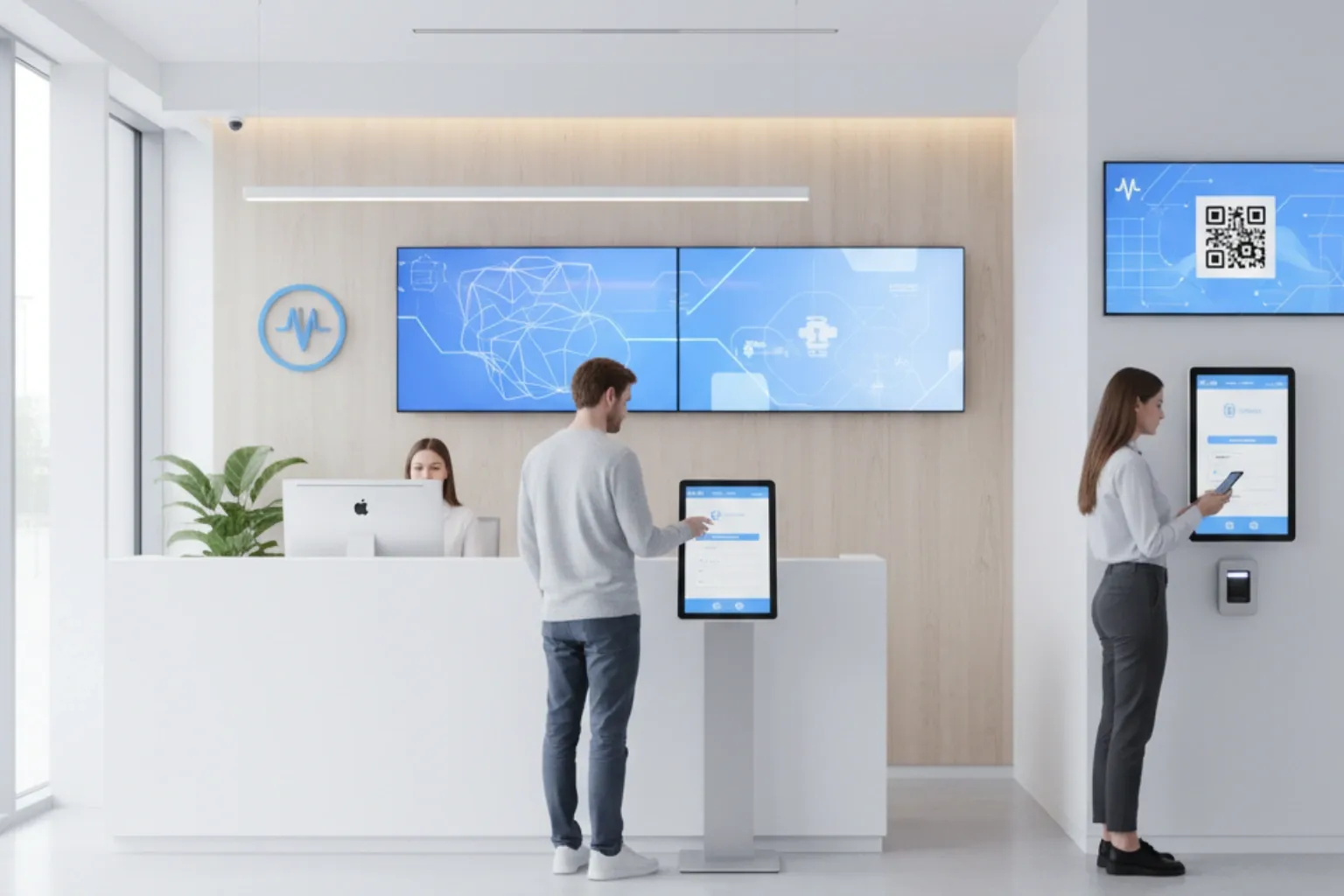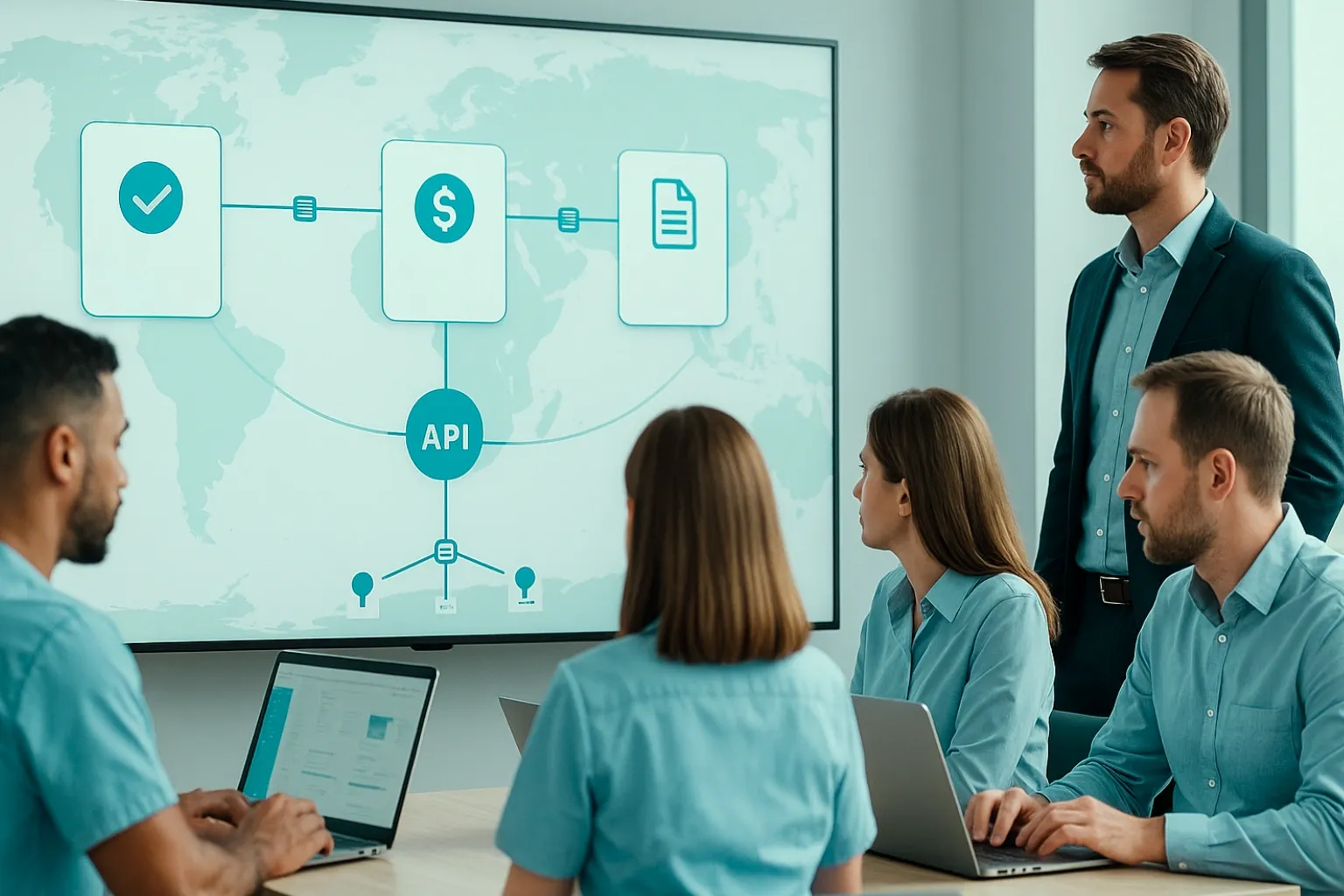
Running a modern clinic means connecting people, processes, and data without friction. When each stage of the patient journey—acquisition, scheduling, consultation, exams, billing, and post-visit—runs in isolated systems, bottlenecks appear: rework, delays, duplicate information, and decisions made in the dark. A clinical management system with an open API removes these barriers by letting information flow securely among applications, preserving both patient experience and operational efficiency.
More than a “technical feature,” an open API is a business enabler: it reduces the time between intent and execution, standardizes critical routines, and frees the team to focus on care. Combined with true interoperability—standards such as HL7/FHIR, webhooks, and robust authentication—the clinic gains predictability, scale, and the freedom to integrate the best tool for each job. In this article we will explore the concept of an open API, its importance for management systems, the role of interoperability in healthcare, paths to expand with integrations, plus the benefits and strategies that Ninsaúde Clinic’s open API provides for clinics.
Before we continue, we need to ask: Are you already familiar with Ninsaúde Clinic? Ninsaúde Clinic is an intelligent software designed to simplify clinical management — combining an agile schedule, legally valid electronic health records, telemedicine, and complete financial control in one platform. Discover how Ninsaúde Clinic transforms daily operations and enhances patient care.

What is an Open API
An API (Application Programming Interface) is a set of endpoints, rules, and standards that allows software to “talk” to other software. An open API is a documented interface, accessible to partners and developers, with clear policies for authentication, usage limits, and versioning. In practice, it offers a common dictionary to create, read, update, and delete core data—patients, appointments, documents, invoices, and reports—without manual exports or brittle, one-off connections.

“Open” does not mean lack of control; it means transparency and standardization. Public documentation (such as OpenAPI/Swagger), sandbox environments, and code samples accelerate projects and reduce risk. With an open API, your clinic isn’t tied to a single vendor: you can connect CRM, communication platforms (WhatsApp/SMS/email), PACS/RIS, electronic signatures, and BI as the business needs, keeping the electronic health record (EHR) as the source of truth.
Why an Open API Matters for Clinic Management Systems
Clinical reality changes quickly: new sites, payers, regulatory requirements, marketing campaigns, and channels. A management system with an open API gives you the flexibility to adapt processes without rewriting operations. If you need to replace the CRM, for example, the schedule and the EHR remain intact—just reconfigure the integration. This reduces vendor lock-in, shortens time-to-value, and protects your investment.
Beyond flexibility, you gain data quality. Integrating systems through an API avoids duplicate or conflicting records, standardizes critical fields (IDs, allergies, payers, appointment statuses), and strengthens governance. Clinical and administrative teams begin to trust their KPIs because everyone looks at the same data, in real time. The result shows up in metrics like no-show rate, return rate, average visit time, billing SLA, and revenue by specialty.

Another advantage is smart automation: appointment confirmations, waitlist triggers, sending consent forms, attaching documents to the EHR, provider payouts, reconciliation, and sales-funnel updates can be event-driven (webhooks) and orchestrated by business rules. Fewer repetitive tasks, fewer human errors, more scale.
The Role of Interoperability in Healthcare
Interoperability is the ability of systems to exchange and interpret data consistently. In healthcare, that means standards such as HL7 and FHIR, which organize resources (Patient, Practitioner, Appointment, Encounter, Observation, DocumentReference) and define predictable representations. If an exam is recorded in System A and the report is issued in System B, both must “speak the same language” so the central EHR can understand the clinical context.
When interoperability is taken seriously, the electronic health record becomes a reliable hub, aggregating information from telemedicine, PACS/RIS, electronic signatures, and external devices. This simplifies audits, improves continuity of care, and supports clinical, administrative, and financial decisions. For multi-site clinics, it ensures standardization without smothering local nuances.
Interoperability isn’t only about technology; it’s governance. Role-based access control (RBAC), audit trails, and data catalogs (which fields are master, which are derived) keep integrations from turning into black boxes. With open APIs aligned to standards, the clinic can innovate without losing control.
How to Expand Your Clinic with an Open API
Expansion isn’t just opening new locations; it starts by increasing capacity with scalable processes. With an open API, you connect omnichannel confirmations to reduce no-shows, enable self-rescheduling through a secure link, integrate a waitlist, and keep rooms full. At the same time, you feed BI with scheduling, billing, and payout data to size teams and peak hours by specialty.
When launching a new site, the API lets you replicate proven integrations: CRM, payments, electronic signatures, notifications, and PACS/RIS. Instead of starting projects from scratch, you apply a domain-based integration template (patient, scheduling, finance, digital clinic), adjusting only credentials, payers, and local rules. The time savings reduce costs and operational risk.
Expansion can also be partnership-driven with labs, imaging centers, and referral networks. With endpoints and webhooks, reports and results flow automatically into the EHR, accelerating turnaround times and improving the patient experience—especially in care pathways that depend on multiple professionals.

Benefits of Ninsaúde Clinic and Its Open API
Ninsaúde Clinic is designed for clinics seeking productivity, clinical standardization, and sustainable growth. Its open API exposes essential operational resources—patient and guarantor records, multiprovider scheduling, EHR with attachments, integrated telemedicine, appointment confirmations, Ninsaúde Sign (electronic signatures), Ninsaúde Pay (payments), finance with provider payouts and P&L, plus integrations for email marketing and CRM.
In practice, this means less rework and higher data quality. For example: when an appointment is confirmed via WhatsApp, the schedule status changes in real time and, if the patient cancels, a webhook triggers the waitlist. Signed forms are automatically attached to the EHR, preserving the audit trail. Finance can feed a Power BI dashboard with cash flow, delinquency, average ticket, and payouts by location.
Security is another advantage: OAuth 2.0 authentication, resource-level scopes, encryption, RBAC, and detailed logs provide governance without getting in the way. Clear documentation and a sandbox environment shorten development cycles, allowing your internal team or partners to deploy integrations predictably.
Note on compliance: for English-speaking markets, Ninsaúde Clinic aligns with HIPAA expectations regarding privacy and security controls in addition to local regulations.
Strategies Ninsaúde Clinic’s Open API Enables for Clinics
Orchestrating the patient journey. Connect acquisition (website/landing + CRM), qualification (email/WhatsApp nurturing), conversion (online scheduling), and retention (post-visit and returns) into a single flow. At every event—lead moved forward, appointment confirmed, document signed, payment received—Ninsaúde Clinic notifies your systems to keep the funnel synchronized and your commercial team focused on the right opportunities.
Reducing no-shows with operational intelligence. Send confirmations across multiple channels, offer self-rescheduling, and fill schedule gaps with an automated waitlist. Use the BI fed by the API to adjust appointment windows, block unprofitable slots, and redistribute providers into peak-demand shifts. This strategy increases room utilization and improves patient access.

Clinical standardization and compliance. Build protocol and document templates; integrate Ninsaúde Sign to formalize consents and attach them to the EHR. During audits, trails are available, and reports can be exported or consumed via APIs. For specialties dependent on imaging, reports from PACS/RIS can be linked to the clinical record and accessed by authorized staff—preserving confidentiality and alignment with HIPAA principles.
Predictable finance and data-driven management. Synchronize receivables, provider payouts, payer contracts, and cost centers. Build indicators such as billing SLA, denial rate, collections by payer, and margin by service line. With Ninsaúde Clinic’s API, the management dashboard stops being a stale snapshot and becomes live telemetry of operations—guiding pricing, service mix, and site-by-site expansion.
Multi-site scalability. When opening a new location, redeploy the head office’s “integration kit”: confirmations, CRM, payments, documents, and BI. With clear API versioning and well-defined webhooks, rollout is fast and predictable, and every site operates under the same umbrella of processes and KPIs.
Did you like this information? Then get ready for a continuous learning journey by following our blog. Are you a healthcare professional and don’t yet know the benefits of Ninsaúde Clinic? Stay ahead, optimize your processes, and raise the standard of patient care!

